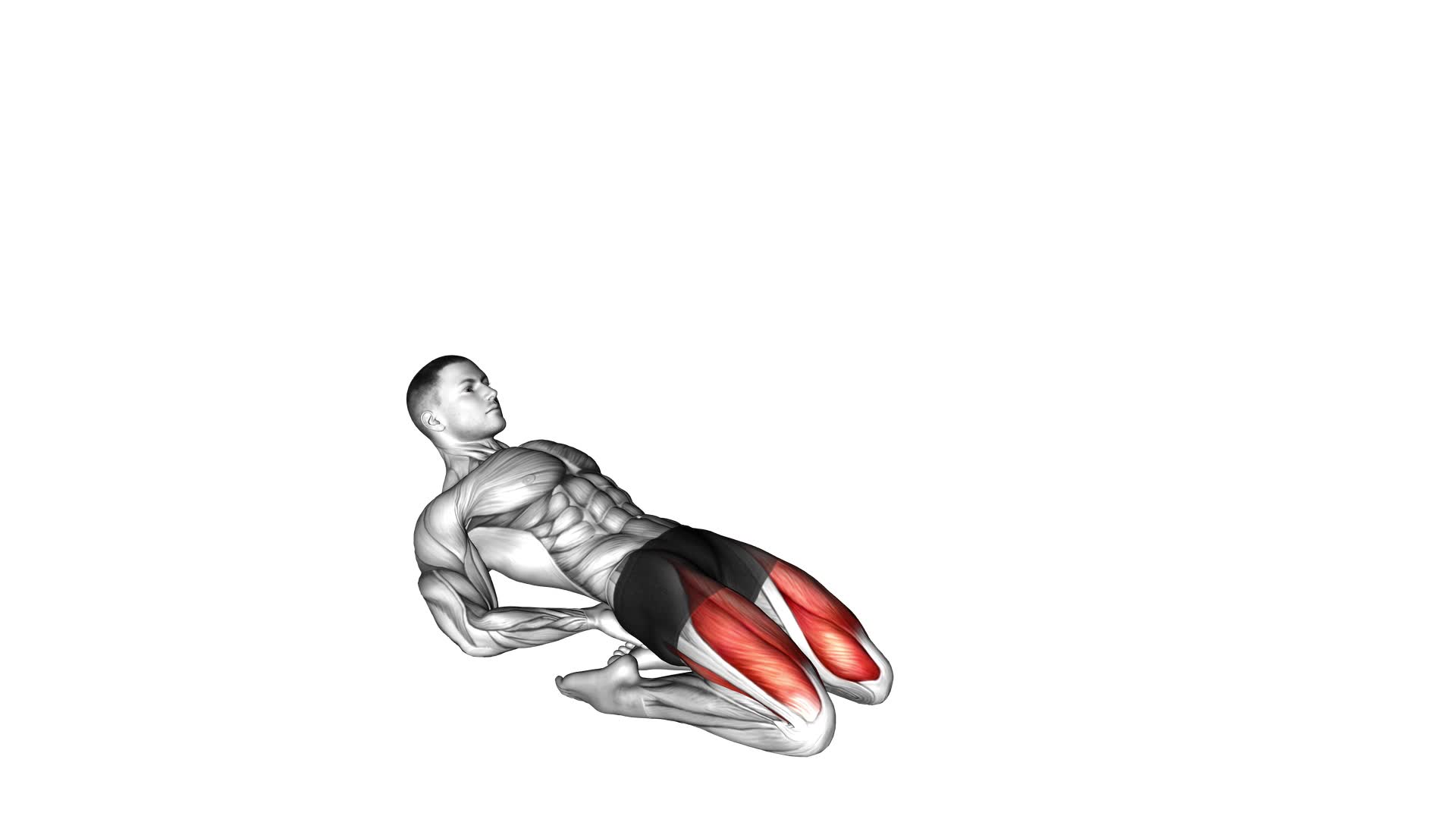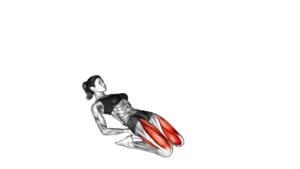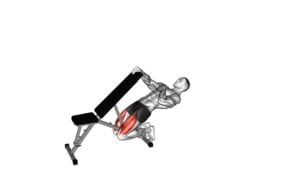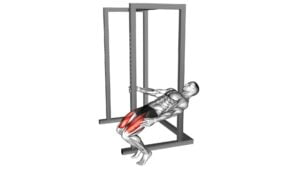Bodyweight Kneeling Sissy Squat – Video Exercise Guide & Tips

Are you looking to strengthen your leg muscles and improve your lower body stability? Look no further than the bodyweight kneeling sissy squat!
Watch This Exercise Video
This effective exercise targets your quadriceps, glutes, and core, all while keeping your joints safe.
In this article, you'll find a video exercise guide and valuable tips to ensure proper technique and get the most out of your sissy squats.
So grab your mat and let's get squatting!
Key Takeaways
- Bodyweight kneeling sissy squats target quadriceps, glutes, and core muscles.
- They improve leg strength, stability, and flexibility in the lower body.
- Proper technique and form include using support for balance and adding resistance with dumbbells or kettlebells.
- Modifications can be made for beginners and advanced fitness levels, gradually increasing difficulty over time.
Benefits of Bodyweight Kneeling Sissy Squats
The benefits of performing the bodyweight kneeling sissy squat include improved quad strength and stability. This exercise specifically targets the quadriceps, which are the large muscles located at the front of your thighs. By incorporating this exercise into your workout routine, you can strengthen these muscles, leading to greater overall leg strength and stability.
One of the main benefits of the bodyweight kneeling sissy squat is that it can be performed without any additional equipment. This makes it a convenient exercise that can be done anywhere, whether you're at home or at the gym. Additionally, there are variations of this exercise that you can try to further challenge yourself and target different muscle groups.
One variation is the single-leg bodyweight kneeling sissy squat, which involves performing the exercise with one leg raised off the ground. This variation not only increases the difficulty of the exercise but also engages your core muscles for improved stability and balance.
Another variation is the weighted bodyweight kneeling sissy squat, where you hold a weight, such as a dumbbell or kettlebell, to increase the resistance. This variation is particularly beneficial for individuals looking to build even more strength in their quads.
Proper Technique and Form for Sissy Squats
To perform sissy squats with proper technique and form, focus on maintaining a strong and stable position throughout the exercise. Here are some key points to keep in mind:
- Common misconceptions:
- Sissy squats aren't just for beginners or those with limited mobility. This exercise can benefit individuals of all fitness levels by targeting the quadriceps and improving knee stability.
- Sissy squats shouldn't be mistaken for regular squats. While both exercises work the lower body, sissy squats specifically target the quads and require a different form.
Variations:
- If you find the bodyweight sissy squat too challenging, you can use a support for balance, such as a wall or a sturdy chair. This will allow you to focus on your form while still reaping the benefits of the exercise.
- To increase the difficulty, you can hold a dumbbell or a kettlebell close to your chest while performing the sissy squat. This added resistance will challenge your quadriceps even more.
Progressions:
- Once you have mastered the bodyweight sissy squat, you can try performing the exercise on an elevated surface, such as a step or a bench. This will increase the range of motion and further engage your quads.
- Another progression is to perform sissy squats with one leg at a time. This unilateral variation adds an extra challenge and helps to correct any muscle imbalances.
Modifications for Beginner and Advanced Fitness Levels
If you're a beginner or an advanced fitness enthusiast, there are modifications available for you to adapt the bodyweight kneeling sissy squat exercise to your specific fitness level.
For beginners, it's important to start with easier variations of the exercise to build strength and stability. One modification you can try is to hold onto a stable surface, such as a wall or a chair, for support. This will help you maintain balance and control throughout the movement.
Another modification is to decrease the range of motion by not going as low in the squat. This will reduce the intensity of the exercise and allow you to gradually work your way up to a full sissy squat.
On the other hand, if you're an advanced fitness enthusiast looking to challenge yourself, there are modifications that can make the bodyweight kneeling sissy squat more difficult. One option is to hold a dumbbell or kettlebell in your hands while performing the exercise. This will add extra resistance and make your muscles work harder.
Another modification is to elevate your heels by placing them on a step or a weight plate. This will increase the demand on your quads and make the exercise more challenging.
Common Mistakes to Avoid During Sissy Squats
To avoid common mistakes during sissy squats, focus on maintaining proper form and alignment throughout the exercise. Here are some common mistakes to watch out for and how to correct them:
- Leaning too far forward: This can put excessive strain on your knees and lower back. Keep your torso upright and engage your core to maintain balance and stability.
- Allowing your knees to collapse inward: This can lead to knee pain and instability. Keep your knees in line with your toes throughout the movement to protect your joints.
- Not going low enough: Partial squats limit the effectiveness of the exercise. Make sure to lower your body until your thighs are parallel to the ground, engaging your glutes and quads fully.
By avoiding these common mistakes and focusing on proper form, you can ensure that you're getting the most out of your sissy squats and minimizing the risk of injury.
Now, let's move on to some tips for maximizing the effectiveness of sissy squats.
Tips for Maximizing the Effectiveness of Sissy Squats
To maximize the effectiveness of your sissy squats, focus on incorporating variations and progressive overload into your training routine. By using progression techniques and targeting different muscle groups, you can optimize your squatting experience.
One way to enhance your sissy squats is by incorporating variations. This can be done by changing the position of your feet, such as widening or narrowing your stance. Experimenting with different foot positions can help target specific areas of your lower body, such as your quadriceps, hamstrings, or glutes. Additionally, you can also try using equipment like resistance bands or dumbbells to add extra resistance and challenge to your sissy squats.
Another key aspect of maximizing the effectiveness of your sissy squats is implementing progressive overload. This means gradually increasing the difficulty of your workouts over time. You can do this by adding more repetitions, increasing the range of motion, or adding more resistance. By progressively challenging your muscles, you stimulate growth and improve strength.
Remember to listen to your body and adjust the intensity and frequency of your sissy squats accordingly. It's important to start with proper form and gradually progress to more challenging variations and increased resistance.
Frequently Asked Questions
Can I Do Bodyweight Kneeling Sissy Squats if I Have Knee Pain or a Knee Injury?
If you're experiencing knee pain or have a knee injury, it's important to be cautious when doing bodyweight kneeling sissy squats. These exercises can put strain on the knees and potentially worsen your condition.
Instead, consider alternative exercises that are gentler on the knees, such as step-ups or lunges. Additionally, you can modify the sissy squat by using a chair or stability ball for support.
Always listen to your body and consult with a healthcare professional for personalized advice.
How Many Reps and Sets Should I Do When Performing Bodyweight Kneeling Sissy Squats?
To determine the optimal rep and set range for bodyweight kneeling sissy squats, consider your fitness level and goals.
Start with 2-3 sets of 10-12 reps, focusing on proper form.
As you progress, gradually increase the number of sets or reps.
To make the exercise more challenging, try using resistance bands or holding weights.
Remember to listen to your body and adjust accordingly.
Consult a fitness professional for personalized guidance.
Can I Incorporate Weights or Resistance Bands Into My Bodyweight Kneeling Sissy Squat Routine?
Yes, you can definitely incorporate weights or resistance bands into your bodyweight kneeling sissy squat routine.
Incorporating weights can increase the intensity and challenge your muscles even more. You can hold dumbbells or use a weighted vest while performing the exercise.
Alternatively, you can modify the exercise with resistance bands by attaching them to a sturdy anchor point and looping them around your shoulders or holding them in your hands. This adds resistance and helps to further strengthen your muscles.
Can Bodyweight Kneeling Sissy Squats Help Improve My Balance and Stability?
Bodyweight kneeling sissy squats can definitely improve your balance and stability. By engaging your core and lower body muscles, this exercise helps strengthen the muscles that support your balance.
It's important to start with a proper warm-up and gradually increase the intensity. If you have knee pain, consider modifying the exercise or consulting a professional.
Are There Any Specific Warm-Up Exercises I Should Do Before Attempting Bodyweight Kneeling Sissy Squats?
Before attempting bodyweight kneeling sissy squats, it's important to do specific warm-up exercises to prepare your body. These exercises can include dynamic stretches, such as leg swings and hip rotations, to increase blood flow and flexibility.
Additionally, performing bodyweight squats and lunges can help activate the muscles you'll be using during sissy squats.
Conclusion
In conclusion, the bodyweight kneeling sissy squat is a highly effective exercise for strengthening the quads, glutes, and core muscles. By following proper technique and form, individuals can maximize the benefits of this exercise and avoid common mistakes.
Modifications are available for beginners and advanced fitness levels, allowing everyone to incorporate sissy squats into their workout routine. Remember to focus on proper form and gradually increase intensity for optimal results.

Author
Years ago, the spark of my life’s passion ignited in my mind the moment I stepped into the local gym for the first time. The inaugural bead of perspiration, the initial endeavor, the very first surge of endorphins, and a sense of pride that washed over me post-workout marked the beginning of my deep-seated interest in strength sports, fitness, and sports nutrition. This very curiosity blossomed rapidly into a profound fascination, propelling me to earn a Master’s degree in Physical Education from the Academy of Physical Education in Krakow, followed by a Sports Manager diploma from the Jagiellonian University. My journey of growth led me to gain more specialized qualifications, such as being a certified personal trainer with a focus on sports dietetics, a lifeguard, and an instructor for wellness and corrective gymnastics. Theoretical knowledge paired seamlessly with practical experience, reinforcing my belief that the transformation of individuals under my guidance was also a reflection of my personal growth. This belief holds true even today. Each day, I strive to push the boundaries and explore new realms. These realms gently elevate me to greater heights. The unique combination of passion for my field and the continuous quest for growth fuels my drive to break new ground.







